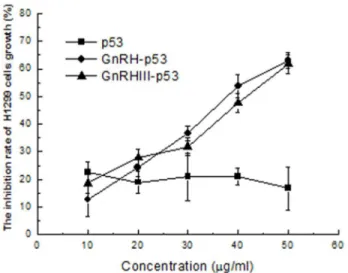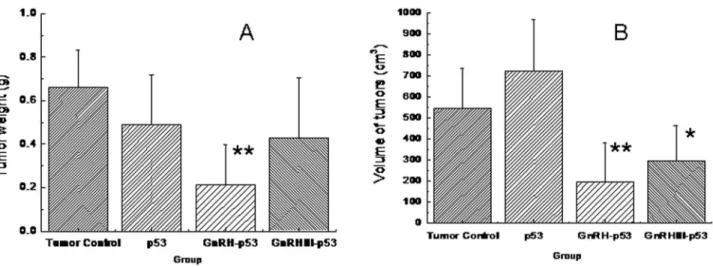The novel fusion proteins, GnRH-p53 and GnRHIII-p53, expression and their anti-tumor effect.
Texto
Imagem




Documentos relacionados
Our results suggest that the detection of p53 immunopositivity, evidence of a high PCNA labeling index (³ 40), and mutations of the p53 gene (exon 10) may have a role in
RESULTS: Prima-1 was able to reactivate p53 function in the T24 (p53 mt) bladder cancer cell line and promote apoptosis via the induction of Bax and Puma expression, activation of
Overall, the MMTV- Hras/p53 R172H/R172H mice closely resembled the MMTV- Hras/p53 -/- mice with regard to age of tumor onset, tumor growth rates, tumor histopathological
Here, using sensitive wild-type p53 (OV2008 and A2780s), resistant wild-type p53 (C13* and OVCAR433), and p53 compromised (A2780cp, OCC1, and SKOV-3) ovarian cancer
The present study assessed the expression of the p53, COX-2, and caspase-3 proteins in tubular, tubulovillous, and villous colorectal adenomas, as well as in the
Whereas, wild type HPV90 E6 induced a slight MG132-sensitive decrease in p53 levels and a slight, but detectable decrease of p53 signal in single transfected cells (Figure 4B); the
The aims of the present study were to evaluate the tissue expression of the proteins P53, E-CD, COX-2 and EGFR in tumor tissue and correlate these with clinical-
The aim of this study was to evaluate tumor proliferation and the expression of the oncogenes HER2/neu, BCL2 and tumor sup- pressor gene p53 in patients undergoing pros- tatectomy
